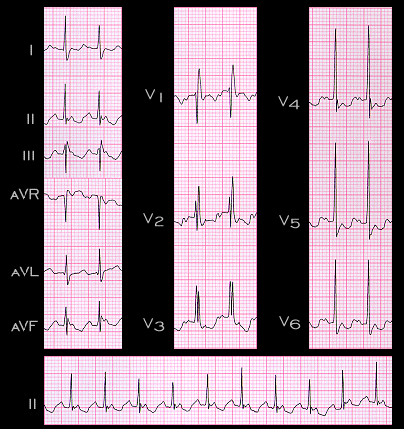
[Can ARROWS be added to the tracing to show the less obvious flutter wave??]
The ECG shown here is another example of type. I atrial flutter but in this example, the flutter waves are upright in leads II, III and aVF and inverted in aVR. This occurs because the atrial re-entry loop rotates in a clockwise direction and atrial depolarization of the anterior portion of the loop is inferiorly directed. This is less common than type I flutter with counterclockwise rotation.
In the example shown here, the flutter rate is again 300, there is 2:1 AV block and the ventricular rate is 150. This scenario, i.e. a flutter rate of 300, 2:1 AV block and a ventricular rate of 150 is very common. Because of this, a narrow complex tachycardia with a rate in the range of 150 should always prompt a search for flutter wave having a rate of 300. This is referred to as the “Rule of 150”.
Note that in this tracing,there is an obvious flutter wave before each QRS complex. Less obvious is the second flutter wave. It is located at the junction of the end of the QRS complex and the onset of the ST segment. In addition, there is incomplete right bundle branch block.
